| |
|
Xiamen Oil Paintings, Wholesale Direct!
|
|
100% hand painted, 100% cotton canvas, 100% money back if not satisfaction. |
|
|
|
|
ART WORKS INDEX
A
B
C
D
E
F
G
H
I
J
K
L
M
N
O
P
Q
R
S
T
U
V
W
X
Y
Z
|
|
ARTISTS INDEX
A
B
C
D
E
F
G
H
I
J
K
L
M
N
O
P
Q
R
S
T
U
V
W
X
Y
Z
|
|
|
|
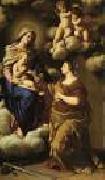 |
SASSOFERRATO
|
|
Italian Baroque Era Painter, 1609-1685
Italian painter and draughtsman. He served his apprenticeship under his father, Tarquinio Salvi. Tradition has it that he later (it is not known exactly when) studied with Domenichino in Naples, where he certainly had the opportunity of meeting Francesco Cozza and where he painted the Adoration of the Shepherds (Naples, Capodimonte). As a young man, Sassoferrato probably travelled often in the areas bordering on the Marches, for example in Umbria and particularly Perugia, where from 1630 he was connected with the Benedictine convent of S Pietro, for which he painted canvases of ten saints for the ceiling of the sacristy of the convent church
|
|
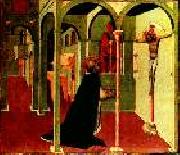 |
SASSETTA
|
|
Italian Early Renaissance Painter, ca.1390-1450
|
|
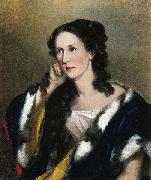 |
Sarah Miriam Peale
|
|
(Philadelphia, Pennsylvania, May 19, 1800 - February 4, 1885, Philadelphia) was an American portrait painter, one of the notable family of artists descended from the miniaturist and still-life painter James Peale, who was her father. She is noted as a portrait painter, mainly of politicians and military figures. Lafayette sat for her four times.
Sarah was James Peale's youngest daughter and was trained by her father, and uncle Charles Willson Peale. She served as a studio assistant to her father. Her first public works date from 1816 with subjects such as flowers and still-life but soon turned to portraiture, In 1818, she spent three months with Rembrandt Peale, her cousin, in Baltimore, and again in 1820 and 1822. He influenced her painting style and subject matter. For 25 years, she painted in Baltimore (1822-47) and, intermittently, in Washington, D.C.
She was accepted to the Pennsylvania Academy of Fine Arts in 1824 along with her sister Anna Claypoole Peale, the first women to achieve this distinction. Over 100 commissioned portrait paintings are known from her time in Baltimore and she was the most prolific artist in the city during that era. Her subjects were wealthy Baltimore residents and politicians from Washington DC.
|
|
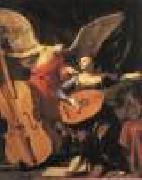 |
SARACENI, Carlo
|
|
Italian painter, Roman school (b. 1579, Venezia, d. 1620, Venezia). Italian painter. He is best known for his jewel-like paintings representing sacred and secular themes, which combine a delicate technique inspired by Adam Elsheimer with a note of observed realism owed to Caravaggio. He also painted altarpieces and worked in fresco.
|
|
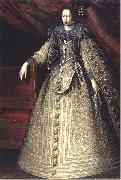 |
Santo Peranda
|
|
(1566-1638) was an Italian painter of the late-Renaissance period.
He was a pupil of the painter Leonardo Corona and later Palma il Giovane. Also known as Santa Peranda. He painted a Descent from the cross for San Procolo in Venice. He painted The defeat of the Saracens for the Ducal Palace of Modena. He painted the Gathering of the Manna for the church of the San Bartolome. In 1623 he finished Glorious Mysteries for the church of San Nicole in Treviso. Among his pupils were Francesco Maffei, Matteo Ponzone, and Filippo Zaniberti.
|
|
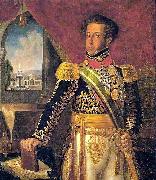 |
Santo angelo
|
|
(November 29, 1806 e December 30, 1879) was a Brazilian Romantic writer and painter, as well as an architect, diplomat and professor. He is patron of the 32nd chair of the Brazilian Academy of Letters.
Porto-alegre was born Manuel Jose de Araejo in Rio Pardo, to Francisco Jose de Araejo and Francisca Antônia Viana. He would change his name to Manuel de Araejo Pitangueira during the independence of Brazil, due to nativist causes. Later on, he finally changed it to its definitive form: Manuel de Araejo Porto-alegre.
In 1826, he moved to Rio de Janeiro, in order to study painting with Jean-Baptiste Debret at the Escola Nacional de Belas Artes. He also studied at what is now the Academia Militar das Agulhas Negras and took a Medicine course and Philosophy. In 1831, he left Brazil along with Debret to Europe, in order to improve his painting techniques. In 1835, he went to Italy, where he met Gonçalves de Magalhães, another Brazilian poet. He and Magalhães would create in France, in the year of 1837, a short-lived magazine named Niterei, alongside Francisco de Sales Torres Homem. Also in 1837, he becomes history painting teacher at the Escola Nacional de Belas Artes, in a post that would last until 1848, when he would become a drawing teacher at the Academia Militar das Agulhas Negras, and starts doing his first caricatures. In 1838, he married Ana Paulina Delamare, having with her two children: Carlota Porto-alegre (the future wife of painter Pedro Americo) and future diplomat Paulo Porto-alegre.
In 1840 he is named the official painter and decorator of Emperor Pedro II's palace. He decorated the imperial palace in Petrepolis, the wedding of Pedro II with Teresa Cristina of the Two Sicilies and the aforementioned emperor's coronation. He was decorated with the Order of Christ and the Order of the Rose.
Reuniting with Gonçalves de Magalhães and Torres Homem, he founded a periodic named Minerva Brasiliense, that lasted from 1843 to 1845. He would publish in this periodic his poem Brasiliana. In 1844, alongside Torres Homem, he founded the humoristic magazine Lanterna Megica, where he published his caricatures.
In 1849, Porto-alegre founded the magazine Guanabara, alongside Joaquim Manuel de Macedo and Gonçalves Dias. The magazine, considered the official journal of the Romantic movement in Brazil, lasted until 1856.
|
|
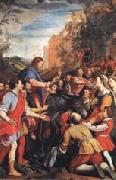 |
Santi Di Tito
|
|
Italian Painter and Architect, 1536-ca.1602
was an Italian painter of Late-Mannerist or proto-Baroque style, what is sometimes referred to as Contra-Maniera. Born in Borgo San Sepolcro, in Tuscany. There is little documentation to support the alleged training under Bronzino or Baccio Bandinelli. From 1558-1564, he worked in Rome on frescoes in Palazzo Salviati and the Sala Grande of the Belvedere (Homage of the People) alongside Giovanni de' Vecchi and Niccol?? Circignani. He acquired a classical trait, described as Raphaelesque by S.J. Freedburg. This style contrasted with the reigning ornate Roman painterliness of the Federico and Taddeo Zuccari or their Florentine equivalents: Vasari, Alessandro Allori, and Bronzino. Among his pupils was Cigoli. Another pupil named Francesco Mochi became a sculptor in the Baroque style, creating among other pieces, the colossal Saint Veronica', supervised by Gianlorenzo Bernini and placed in the crossing of St. Peter's Basilica in Rome. After returning to Florence in 1564, He joined the Accademia del Disegno, and he did not venture to paint outside of Tuscany. He contributed two unusual paintings for the Duke's study and laboratory, the Studiolo of Francesco I in the Palazzo Vecchio. This artistic project was partly overseen by Giorgio Vasari. These paintings are (the Sisters of Fetonte and Hercules and Iole).
|
|
|
|
|
|
 |
Sanford Robinson Gifford
|
|
1823-1880
Sanford Robinson Gifford (July 10, 1823 ?C August 29, 1880) was an American landscape painter and one of the leading members of the Hudson River School. Gifford's landscapes are known for their emphasis on light and soft atmospheric effects, and he is regarded as a practitioner of Luminism, an offshoot style of the Hudson River School.
Returning to his studio in New York City, Gifford painted numerous major landscapes from scenes he recorded on his travels. Gifford's method of creating a work of art was similar to other Hudson River School artists. He would first sketch rough, small works in oil paint from his sketchbook pencil drawings. Those scenes he most favored he then developed into small, finished paintings, then into larger, finished paintings.
|
|
 |
Sanford Gifford
|
|
(July 10, 1823 C August 29, 1880) was an American landscape painter and one of the leading members of the Hudson River School. Gifford's landscapes are known for their emphasis on light and soft atmospheric effects, and he is regarded as a practitioner of Luminism, an offshoot style of the Hudson River School.
|
|
|
|
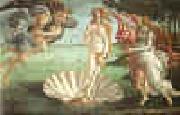 |
Sandro Botticelli
|
|
Italian Early Renaissance Painter, 1445-1510
Italian painter and draughtsman. In his lifetime he was one of the most esteemed painters in Italy, enjoying the patronage of the leading families of Florence, in particular the Medici and their banking clients. He was summoned to take part in the decoration of the Sistine Chapel in Rome, was highly commended by diplomatic agents to Ludovico Sforza in Milan and Isabella d Este in Mantua and also received enthusiastic praise from the famous mathematician Luca Pacioli and the humanist poet Ugolino Verino. By the time of his death, however, Botticelli s reputation was already waning. He was overshadowed first by the advent of what Vasari called the maniera devota, a new style by Perugino, Francesco Francia and the young Raphael, whose new and humanly affective sentiment, infused atmospheric effects and sweet colourism took Italy by storm; he was then eclipsed with the establishment immediately afterwards of the High Renaissance style, which Vasari called the modern manner, in the paintings of Michelangelo and the mature works of Raphael in the Vatican. From that time his name virtually disappeared until the reassessment of his reputation that gathered momentum in the 1890s
|
|
|
|
|
|
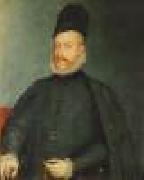 |
SANCHEZ COELLO, Alonso
|
|
Spanish Painter, ca.1531-1588
was a portrait painter of the Spanish Renaissance and one of the pioneers of the great tradition of Spanish portrait painting. Alonso Senchez Coello spent his childhood in Benifair de les Valls, until the death of his father when he was around ten years old. He was educated in Portugal at his grandfather's home. Coello's years in Portugal and his family name of Portuguese origin led to a long-standing belief that he was in fact Portuguese. His grandfather (after whom he was named) was in the service of King John III of Portugal who sent the young painter to study with Anthonis Mor (also known as Antonio Moro) in Flanders around 1550. He was under the service of Antoine de Granville, bishop of Arras, learning from Mor. While studying in Flanders, Coello also spent time copying some of Titian's works. In 1552, the painter went to Lisbon with Anthonis Mor when Charles V commissioned Mor to paint the Portuguese royal family. For a few years, Senchez Coello remained in Portugal working for the court of the heir to the throne, John, Crown Prince of Portugal. After the prince's death, Senchez Coello moved to the Spanish court of Philip II, having been recommended by the widow of John, Juana, who was the sister of the Spanish king. In 1555, S??nchez Coello was in Valladolid working for the Spanish court, and when Mor left Spain in 1561, Senchez Coello took his former master's place as Court Painter. Senchez Coello married Louisa Reyaltes in either 1560 or 1561 in Valladolid, and they had seven children. Coello's daughter, Isabel Senchez (1564-1612),
|
|
|
|
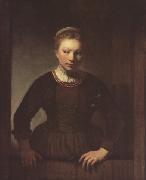 |
Samuel van hoogstraten
|
|
Dutch Baroque Era Painter, 1627-1678
Dutch portrait painter and etcher, studied with his father, Dirk van Hoogstraten (1596?C1640), and with Rembrandt. His best works, such as The Old Jew (Vienna), reflect the influence of Rembrandt. He was director of the Academy in Dordrecht and author of a treatise (1678) in which he analyzed the theory and practice of the art of Rembrandt and other artists of the period.
|
|
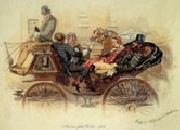 |
Samuel Thomas Gill
|
|
(Devon, England 1818 - Melbourne 1880 ) Australian/British Artist
Australian/British Artist,also known by his signature S.T.G., was and English-born Australian artist. Gill was born in Perriton, Somerset, England, son of the Reverend Samuel Gill, a Baptist minister, and his first wife, Winifred Oke. Rev. Gill became the headmaster of a school at Plymouth, where the son was first educated, then he continued to Dr Seabrook's Academy, Plymouth. Having moved to London, Gill was employed as a draughtsman and watercolour painter by the Hubard Profile Gallery, before departing for the colony of South Australia in 1839 with his parents, arriving in December. Gill arrived in Adelaide, aged 21 and established a studio in 1840, and called for those 'desirous of obtaining a correct likeness' of themselves and their families, friends, animals and residences to contact him. His activities soon expanded to include street scenes and public events, including the newly discovered copper mines at Burra Burra as well as the departure of Charles Sturt's expedition for the interior on 8 October 1844.
|
|
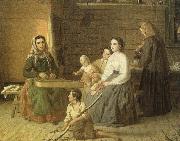 |
samuel taylor coleridge
|
|
Born: 21 October 1772
Birthplace: Devonshire, England
Died: 25 July 1834 (heart attack)
Best Known As: The author of The Rime of the Ancient Mariner
|
|
|
|
|
|
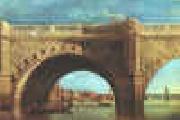 |
Samuel Scott
|
|
1702-1772
British
Samuel Scott Gallery
(b London, c. 1702; d Bath, 12 Oct 1772). English painter. In 1725 a sea-piece ascribed to Scott appeared at auction in London. In 1727 he was appointed Accomptant in the Stamp Office, Lincoln's Inn Square, London, an office he held for 28 years at an annual salary.
|
|
 |
Samuel S. Carr
|
|
American, 1837-1908,was an American pastoral and landscape painter. Originally from England, he relocated to the U.S. (specifically, New York City, where he later studied mechanical drawing in 1865) around 1862. He is recorded as having lived in Brooklyn from 1879 to 1907, along with his sister, Annie, and her husband, John Bond. He never married. He is a fairly well-known artist
|
|
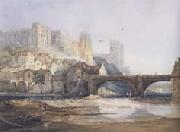 |
Samuel Prout
|
|
English Painter, 1783-1852
was an English water-colour painter. He was born at Plymouth, and spent whole summer days, in company with Benjamin Haydon, drawing the quiet cottages, rustic bridges and romantic watermills of the beautiful valleys of Devon. He made a journey through Cornwall to try his hand in furnishing sketches for Britton's Beauties of England. In 1803 he moved to London, where he stayed until 1812. In London, Prout saw new possibilities, and endeavoured to correct and improve his style by studying the works of the rising school of landscape. To earn a living, he painted marine pieces for Palser the printseller, took students, and published drawing books for learners. He was one of the first to use lithography in his artwork. It was not however until about 1818 that Prout discovered his niche. Happening time to make his first visit to the Continent, and to study the quaint streets and market-places of continental cities, he suddenly found himself in a new and enchanting province of art. His eye caught the picturesque features of the architecture, and his hand recorded them with skill. The composition of his drawings was exquisitely natural; their colour exhibited "the truest and happiest association in sun and shade"; the picturesque remnants of ancient architecture were rendered with the happiest breadth and largeness, with the heartiest perception and enjoyment of their time-worn ruggedness
|
|
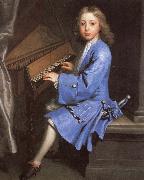 |
samuel pepys
|
|
Born: 23 February 1633
Birthplace: London, England
Died: 16 May 1703
Best Known As: Author of Samuel Pepys' diaries
|
|
|
|
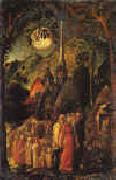 |
Samuel Palmer
|
|
1805-1881
British
Samuel Palmer Galleries
English painter, draughtsman and etcher. Palmer was a key figure of English Romantic painting who represented, at least in his early work, its pastoral, intuitive and nostalgic aspects at their most intense. He is widely described as a visionary and linked with his friend and mentor William Blake, though he stood at an almost opposite extreme in his commitment to landscape and his innocent approach to its imagery. He had none of Blake irony or complexity and was inspired by a passionate love of nature that found its philosophical dimension in unquestioning Neo-Platonism.
|
|
|
|
|
|
|
|
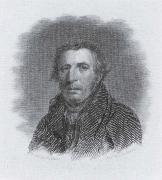 |
Samuel Lovett Waldo
|
|
American Painter, 1783-1861
American painter. After attending a country school and working on his father farm, he decided at the age of 16 to become an artist. He took lessons from Joseph Steward (1753-1822), a retired minister who operated a portrait studio in Hartford, CT. Waldo opened his own studio in Hartford in 1803, before moving on to paint portraits in Litchfield, CT, and Charleston, SC. In 1806, bearing letters of introduction to Benjamin West and John Singleton Copley, Waldo travelled to London, where he studied at the Royal Academy. His portrait of Mr M Dougle (untraced) was shown at the Royal Academy in 1808.
|
|
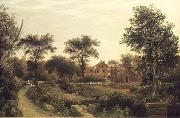 |
Samuel Lancaster Gerry
|
|
(1813-1891) was an artist in 19th-century Boston, Massachusetts. He painted portraits, and also landscapes of the White Mountains and other locales in New England. He was affiliated with the New England Art Union, and the Boston Artists' Association. In 1857 he co-founded the Boston Art Club.
Born in Boston, Gerry was self-taught as an artist. He showed works in many public settings, such as the 1841 exhibit of the Massachusetts Charitable Mechanic Association; and an 1879 exhibit of contemporary art at the Museum of Fine Arts, Boston. He attended the 1860 convention of the National Art Association in Washington, DC.
New England Homestead, 1839, by S.L. GerryStudents of Gerry included H. Frances Osborne, Samuel Green Wheeler Benjamin, Fannie Elliot Gifford, Charles Wesley Sanderson, and J. Frank Currier. With the exception of three years abroad, his professional life was passed chiefly in Boston
|
|
|
|
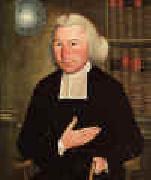 |
Samuel King
|
|
1748-1819
Samuel King Gallery
American painter, carver and nautical instrument maker. He was the son of Benjamin King, a mathematical and nautical instrument maker of Newport, RI. Samuel King's early portrait of the Rev. Ezra Stiles (New Haven, CT, Yale U. A.G.) is undoubtedly his masterpiece and a tour de force of symbolism. The portrait was begun in 1770 and completed on 1 August 1771. It shows the interest of the instrument maker in detail and exactitude of delineation. King's other known portraits show no such originality and in the main reflect compositions taken from portraits known to have been hanging in Newport at the time or from English prints. Since Samuel King and Charles Bird King (unrelated) were neighbours on Clarke Street in Newport, he probably influenced Charles Bird King. Washington Allston and Ann Hall (1792-1863) were both Samuel King's pupils.
|
|
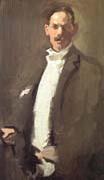 |
Samuel John Peploe
|
|
Scottish Painter, 1871-1935,Scottish painter. He studied at the Royal Scottish Academy schools from 1893 to 1894, and then at the Academie Julian and Acad?mie Colarossi in Paris, where he shared rooms with Robert Brough. The influence of the rustic realism of French painters and of the Glasgow Boys is clear in landscape drawings and paintings executed in Edinburgh from the mid-1890s. His still-life studies reveal the influence of the work of both Manet and Hals, which he saw in European galleries, with their combinations of thick impasto and fluid brushwork, dark background, strong lighting and meticulous handling of tones. Between 1900 and c. 1910, when he moved to Paris, he painted in Edinburgh, on sketching holidays in Scotland and in northern France with John Duncan Fergusson, and exhibited in Edinburgh, Glasgow and London.
|
|
|
|
|
|
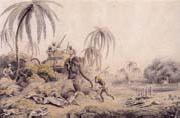 |
Samuel Howitt
|
|
English, 1756-1822,was an artist from England. Samuel Howitt was born into a wealthy Quaker family in Nottinghamshire, England. He began painting as a hobby and to amuse his friends. Hunting and racing were his hobbies and he mimicked this interest in his work. Howitt's family experienced financial difficulties, so Howitt decided to move to London. In London, Howitt made a career out of his talent, flourishing as a professional artist. He was published often in The Sporting Magazine and went on to illustrate various books. Howitt is best known for his lively and exotic sporting scenes. His superior watercolors and aquatints depict dramatic racing and hunting scenes as well as an array of conventional and exotic animals. Howitt's work is included in the Mellon Collection, which possesses no fewer than 160 of his watercolors, and many of his aquatints. Howitt exhibited at the Royal Academy and illustrated several books, including his own entitled The British Sportsman c.1812 and British Preserve c.1824. Samuel Howitt, "genius, artist, sportsman", concentrated his considerable artistic talents on picturing scenes of horse-racing and hunting in all its aspects. Born in Nottinghamshire, England, Howitt was largely self-taught ,"although he must have been helped by his companions George Morland, Rowlandson and John Raphael Smith. Howitt's watercolours of hunting, shooting and racing have delightful spontaneity.
|
|
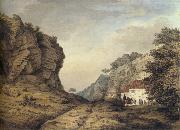 |
Samuel Hieronymous Grimm
|
|
Swiss Painter, 1733-1794
Swiss painter and draughtsman, active in England. He studied in Berne under Johann Ludwig Aberli and became established as a painter of topographical views in oil and watercolour. His early surviving works (e.g. River Landscape and Landscape with Chasseurs; Basle, priv. col.) are principally tinted drawings of landscapes and alpine scenery, with scenes of rustic life in the foreground; they display his characteristically charming and informal style. He also produced many decorative book illustrations: the frontispiece and plates to Friedrich von Hagedorn's Poetische Werke (1769-72) are among his finest. By 1764 Grimm had abandoned oils and was painting only in watercolour. From 1765 to 1768 he travelled and painted in France; he then moved to England,
|
|
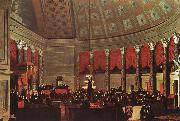 |
Samuel Finley Breese Morse
|
|
1791-1872
Samuel F.B. Morse was born on April 27, 1791 in Charlestown, Massachusetts, the first child of geographer and Pastor Jedidiah Morse (1761-1826) and Elizabeth Ann Breese (1766-1828). Jedidiah was a great preacher of the Calvinist faith and supporter of the American Federalist party. He not only saw it as a great preserver of Puritan traditions (strict observance of the Sabbath), but believed in its idea of an alliance with English in regards to a strong central government. Jedidiah strongly believed in education within a Federalist framework alongside the instillation of Calvinist virtues, morals and prayers for his son. After attending Phillips Academy in Andover, Massachusetts, Samuel Morse went on to Yale College to receive instruction in the subjects of religious philosophy, mathematics and science of horses. While at Yale, he attended lectures on electricity from Benjamin Silliman and Jeremiah Day. He earned money by painting. In 1810, he graduated from Yale.
Morse's Calvinist beliefs are evident in his painting the Landing of the Pilgrims, through the depiction of simplistic clothing as well as the austere facial features. This image captured the psychology of the Federalists; Calvinists from England brought to the United States ideas of religion and government thus forever linking the two countries. More importantly, this particular work attracted the attention of the famous artist, Washington Allston. Allston wanted Morse to accompany him to England to meet the artist Benjamin West. An agreement for a three- year stay was made with Jedidah, and young Morse set sail with Allston aboard the Lydia on July 15, 1811 (1).
Upon his arrival in England, Morse diligently worked at perfecting painting techniques under the watchful eye of Allston; by the end of 1811, he gained admittance to the Royal Academy. At the Academy, he fell in love with the Neo-classical art of the Renaissance and paid close attention to Michelangelo and Raphael. After observing and practicing life drawing and absorbing its anatomical demands, the young artist successfully produced his masterpiece, the Dying Hercules.
To some, the Dying Hercules seemed to represent a political statement against the British and also the American Federalists. The muscles apparently symbolized the strength of the young and vibrant United States versus the British and British-American supporters. During Morse??s time in Britain the Americans and English were engaged in the War of 1812 and division existed within United States society over loyalties. Anti-Federalists Americans aligned themselves with the French, abhorred the British, and believed a strong central government to be inherently dangerous to democracy.(3) As the war raged on, his letters to his parents became more anti-Federalist in their tones. In one such letter Morse said, "I assert that the Federalists in the Northern States have done more injury to their country by their violent opposition measures than a French alliance could. Their proceedings are copied into the English papers, read before Parliament, and circulated through their country, and what do they say of them... they call them (Federalists) cowards, a base set, say they are traitors to their country and ought to be hanged like traitors."
|
|
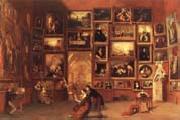 |
Samuel FB Morse
|
|
1791-1872,American painter and inventor. The son of a Calvinist minister, he began amateur sketching while a student at Yale College, New Haven, CT. After graduating in 1810, he returned to Charlestown, MA, to paint family portraits. In Boston in the same year he met Washington Allston, recently returned from Italy, under whose tutelage he executed his first history painting, the Landing of the Pilgrims at Plymouth (c. 1810-11; Boston, MA, Pub. Lib.). He joined Allston on his trip to London in 1811, enrolled in the Royal Academy Schools and also studied privately with Allston and Benjamin West. Morse Dying Hercules (1812-13; New Haven, CT, Yale U. A.G.), based on the pose and musculature of the Laokoon (Rome, Vatican, Mus. Pio-Clementino) and the theory evident in Allston Dead Man Restored to Life by Touching the Bones of the Prophet Elisha (1811-14; Philadelphia, PA Acad. F.A.), was critically acclaimed when exhibited at the Royal Academy and is indicative of Morse academic interests. After two trips in 1813 and 1814 to Bristol, where he painted a number of portraits and small subject pieces, Morse ended his period in England with another mythological history painting, the Judgement of Jupiter (1814-15; New Haven, CT, Yale U. A.G.).
|
|
|
|
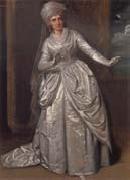 |
Samuel De Wilde
|
|
British 1748-1832,English painter and etcher of Dutch descent. He was the son of a Dutch joiner who had settled in London by 1748. On 19 November 1765 he was apprenticed for seven years to his godfather, Samuel Haworth, a joiner in London. However, he left after five years and enrolled as a student at the Royal Academy Schools in 1769. He exhibited small portraits at the Society of Artists (1776-8) and at the Royal Academy (from 1778), where he also showed fancy pictures of banditti in the style of Philippe Jacques de Loutherbourg. But the genre that he made very much his own was theatrical portraiture: he exhibited theatrical portraits at the Royal Academy almost every year from 1792 to 1821.
|
|
|
|
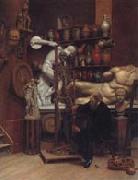 |
Samuel Butler
|
|
British author , (1835 - 1902)
Samuel Butler was born on Dec. 4, 1835, in Langar, near Bingham, Nottinghamshire, the son of the local vicar. In a time of common paternal absolutism, his childhood seems to have been bleak and graceless. After taking a degree at Cambridge, he came into open conflict with his father over the question of his future profession, and at last he emigrated to New Zealand to become a sheep farmer. But though free of his father, he was not free of revolt, and the spirit of resentful rebelliousness marked much of his later life. In New Zealand he read Charles Darwin's Origin of Species and wrote a series of newspaper articles setting forth Darwin's ideas and ingeniously applying the evolutionary hypothesis to machines. Having made a modest fortune, he returned to England in 1864. Erewhon (1872), Butler's first book, is a mixture of satire, utopian theories, and serious speculation masked as whimsy. Set in the frame of a trip to an unknown land (Erewhon is an anagram of "no-where"), it has no real plot but is rather a description and discussion of the customs and institutions of Erewhon. In this land moral failings are treated as mental illness and cured by a "straightener," but physical illness and misfortune are considered crimes and severely punished. Children sign certificates absolving their parents of responsibility for their birth, and education is carried on in the College of Unreason. Butler's reflections on orthodox religion, begun in New Zealand, issued in The Fair Haven (1873), an ironic attempt to reconcile the New Testament with rationalistic criticism. In Life and Habit he returned to the question of evolution. In Evolution Old and New (1879), Unconscious Memory (1880), and Luck, or Cunning? (1887), he developed his ideas with an increasingly self-righteous resentment of what he conceived to be the Darwinians' deliberate concealment of the truth. Butler hoped to be able to restore will, intelligence, and design to a universe apparently made meaningless by the blind process of natural selection. The novel The Way of All Flesh, Butler's most famous work, was written between 1872 and 1885. It is the supposed biography of Ernest Pontifex, narrated by an older friend with an unrelenting candor deliberately affronting conventional pieties.
|
|
|
|
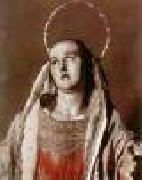 |
SALZILLO, Francisco
|
|
Spanish sculptor (b. 1707, Murcia, d. 1783, Murcia).
Spanish sculptor of Italian descent. He was trained by his father, Nicol Salzillo (1672-1727), a Neapolitan sculptor who had settled in Murcia, whose first documented work is dated 1700. Francisco also studied with the Jesuits and was taught drawing and sculpture by the cleric and painter Manuel Senchez ( fl 1731-9). He entered the Dominican Order in Murcia as a novice but left to take charge of his father's studio at the latter's death in 1727. Francisco was assisted by his brothers, Juan Antonio Salzillo and Patricio Salzillo, a priest, and by his sister, Ines Salzillo, who specialized in painting carved religious statues. In 1746 Francisco married Juana Vallejo Martenez, and in 1755 he was appointed escultor y modelista by the municipal government (ayuntamiento) and Inspector to the Inquisition for painting and sculpture in Murcia. In 1763 he established an academy
|
|
|
|
|
|
|
|
|
|
|
|
|
| Wholesale China Oil Painting Wholesale Oil Painting China Xiamen Portrait Reproduction on canvas Chinese Oil Painting Wholesale USA Oil Painting |
|
|
|
|
|